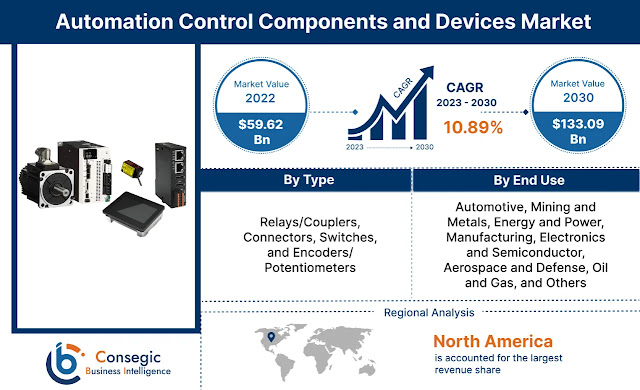Oscilloscopes in the Spotlight: Why Precision Waveform Analysis Is Becoming a Board‑Room Priority
From EV powertrains to 5 G radios, today’s products depend on flawless high‑speed signals. That reality is thrusting the Oscilloscope Market into the limelight. Designers, repair engineers, and academic labs alike now insist on deeper insight into nanosecond events, triggering fresh demand for advanced, feature‑rich scopes. Add the surge in hobbyist DIY culture and tighter regulatory test mandates, and oscilloscopes have shifted from niche lab gear to must‑have assets across tech ecosystems.
2. Market Size and Growth Potential
The global market generated USD 2.51 billion in 2024. With connected‑device complexity rising, revenues are forecast to touch USD 2.62 billion in 2025 and climb to USD 3.58 billion by 2032, reflecting a 4.60 % CAGR (2025‑2032). This steady uptick signals sustained investment in R&D benches, production QA lines, and field‑service kits—cementing oscilloscopes as strategic enablers of product reliability and time‑to‑market.
3. What’s Driving the Market?
-
Technological Innovation – Faster sampling (>100 GS/s) and mixed‑signal capabilities address high‑speed serial standards and IoT power analysis.
-
Industrial Digitalization – Smart factories and predictive maintenance require in‑situ waveform diagnostics, boosting portable scope demand.
-
STEM Education & Maker Movement – Universities and hobbyists propel volume growth in entry‑level digital scopes.
-
Government Compliance – EMC, safety, and automotive standards mandate rigorous signal integrity tests, expanding procurement budgets.
4. Drivers, Restraints & Opportunities
-
Drivers: Miniaturized electronics, 48‑V automotive architectures, and 6 G research drive continual bandwidth upgrades.
-
Restraints: High upfront cost of ultra‑high‑bandwidth models and user‑skill gaps in emerging markets.
-
Opportunities: Cloud‑connected scopes for remote collaboration, underserved SMEs in Latin America, and aftermarket software add‑ons that turn hardware into subscription revenue.
5. Market Segmentation
By Type
-
Analog
-
Digital
By Component
-
Hardware
-
Software
By End User
-
Engineering
-
Medical & Life Sciences
-
Consumer Electronics
-
IT & Telecommunication
-
Electrical & Electronics
-
Others
Segmenting by architecture, component, and vertical illuminates purchasing patterns: digital scopes dominate engineering benches, while specialized software modules unlock value in telecom and medical diagnostics.
6. Segmental Opportunities
-
Largest Subsegment: Digital Hardware—owing to superior bandwidth, storage depth, and protocol decoding required by modern high‑speed buses.
-
Fastest‑Growing Subsegment: Software Analytics—cloud‑based waveform search, AI‑driven anomaly detection, and upgrade‑on‑demand licensing lower entry costs and broaden user reach.
7. Regional Trends
-
North America – Strong DIY culture and aggressive 5 G rollout sustain demand for mid‑range mixed‑signal scopes.
-
Asia‑Pacific – Fastest growth; mass manufacturing hubs and rising engineering talent pools in China, India, and ASEAN spur high‑volume purchases.
-
Europe – Focus on eco‑friendly power electronics and EV R&D drives adoption of precision power scopes.
-
Latin America & Middle East & Africa – Infrastructure upgrades and expanding technical education create greenfield opportunities for entry‑level instruments and training bundles.
8. Challenges and Innovation
Challenges:
-
Price sensitivity among small labs.
-
Limited high‑bandwidth component supply chains.
-
Technician training gaps.
Innovations answering the call:
-
Modular scopes that allow incremental bandwidth upgrades.
-
IoT‑enabled devices for remote firmware pushes and diagnostics.
-
Battery‑efficient portable models supporting fieldwork without compromising sample rate.
9. Top Key Players in Oscilloscope Market
Agilent Technologies Inc., Keysight Technologies, Teledyne LeCroy Inc., Rohde & Schwarz GmbH & Co. KG, National Instruments Corp., ZTEC Instruments, RIGOL Technologies, Yokogawa Electric Corp., Fluke Corp., Tektronix, Inc., Keysight Technologies Inc., Pico technology Ltd., Good Will Instrument Co., Ltd., BK Precision, Digimess Instruments, Hantek, and Texas Instruments Inc.
10. Outlook: What’s Ahead?
Expect oscilloscopes to evolve from single‑function testers to intelligent, networked analytics hubs. Future models will feature customizable app stores, eco‑mode operation for energy savings, and seamless integration with digital twins—turning signal visibility into a real‑time strategic asset.
11. FAQs
Q1: What is the current market size and future forecast for the Oscilloscope Market?
A: Valued at USD 2.51 billion in 2024, the market is projected to surpass USD 3.58 billion by 2032, growing at a 4.60 % CAGR.
Q2: Which segment leads the market?
A: Digital hardware oscilloscopes lead, driven by bandwidth and mixed‑signal flexibility.
Q3: Which region shows the fastest growth?
A: Asia‑Pacific, owing to expansive electronics manufacturing and R&D investment.
Q4: What innovations are driving the market forward?
A: Modular upgrades, cloud‑connected analytics, and AI‑enabled waveform classification are key innovation levers.



Comments
Post a Comment